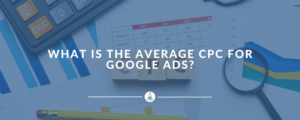Paid search analysis is all about figuring out how to make your PPC campaigns better. Want to know what your competitors are doing? Check out their ads, keywords, and strategies. This will help you spend your money smarter and get better results.
Ready to improve your ROI? Let’s get started.
Understanding Paid Search Analysis
Paid search analysis is like spying on your competitors, but legally.
You get to peek at their ads, keywords, and strategies to see what’s working for them—and then do it better. It’s like copying homework, but making it look like your own (in a smarter way).
One crucial step in this process is creating a detailed checklist to ensure you cover all the important areas, like ad copy, keywords, landing pages, and bidding strategies.
This helps you catch key insights that might otherwise slip through the cracks.
Paid search analysis isn’t just theory. It’s practical, data-driven, and gives you the ammo you need to make smarter, faster moves in your campaigns.
What Is Paid Search Analysis and Why Does It Matter?
Paid search analysis is all about checking out how your competitors run their ads and how you stack up. You bid on keywords related to your business and use tools like Google Ads Auction Insights to see where you stand.
This data helps you figure out how often your competitors’ ads show up and where they rank, so you can tweak your strategies and improve your ad performance.
Here’s the pro tip: focus on keywords where competitors consistently outrank you but where you still have potential to compete. This tells you exactly where to refine bids, optimize ad copy, or tweak landing pages.
Another tip—don’t just track their wins; also look for gaps where they’re missing opportunities.
Why Is Paid Search Analysis Important for Your PPC Campaigns?
Paid search analysis is your go-to tool for figuring out what your competitors are up to. It shows you which keywords they’re using, how much they’re spending, and what kind of ad copy is getting them clicks.
Pro tip: Look for keywords they’re targeting but you aren’t. This is an easy way to find missed opportunities. Also, check out their landing pages—are they doing something better than you?
Maybe their messaging is clearer or the page loads faster. These small details can make a big difference.
How to Spot Your Competitors in Paid Search
The easiest way to find your competitors is by using Google Ads Auction Insights. This tool shows you who’s bidding on the same keywords, where their ads are showing, and how often they appear compared to yours.
After you know who you’re up against, dig into their strategy:
- Look at the keywords they’re targeting.
- Check their landing pages—are they faster, clearer, or more engaging than yours?
- Review their display ads to see what they’re highlighting.
This gives you a clear picture of their strategy and helps you spot areas where you can improve or try something different to stand out.
How to Use Google Ads Auction Insights for Competitive Analysis
Google Ads Auction Insights is a powerful tool to see who your main competitors are. Simply go into your Google Ads account, select a campaign, ad group, or keyword, and you’ll find the auction insights report.
This report shows you critical metrics like:
- How often your ads show compared to competitors.
- Where your ads rank in relation to others.
- How often your ads rank higher than your competitors’.
If you notice a competitor consistently outranking you, it’s time to revisit your bids, ad copy, or landing pages.
Use this data to adjust your strategies, focusing on areas where you can gain ground.
How to Leverage Competitive Analysis Tools for PPC Success
In addition to Google Ads Auction Insights, tools like SEMrush and SpyFu are game-changers for PPC competitor analysis. SEMrush helps you track competitors’ PPC keyword trends, see their ad strategies, and even get a sense of their budget allocation.
Use these tools to monitor not just what your competitors are doing, but how often they change their strategy. This will help you stay agile, optimize your timing, and keep your PPC campaigns competitive.
How to Analyze Competitor Ads for PPC Insights
Analyzing competitor ads is a key way to understand their PPC strategies. Focus on key components like headlines, descriptions, and display URLs to see how they craft their messaging and what offers they’re promoting.
Pay attention to patterns in their ad copy—what kind of language, calls to action (CTAs), or deals seem to get repeated? These trends can offer insight into what’s resonating with their audience. The goal isn’t to copy, but to gather inspiration for your own campaigns.
Pro tip: Keep a list of effective ad copy, CTAs, and offers you find compelling. Then, use those elements to fine-tune your messaging and create ads that stand out from the competition.
How to Conduct Ad Copy Analysis for PPC Success
Ad copy analysis helps you understand how competitors are grabbing attention.
Look closely at their headlines, descriptions, and offers to see what’s driving clicks. Focus on elements like pricing, special features, and promotions that make their ads stand out.
Strong competitor ads often highlight a clear value proposition or use emotional appeals that connect with the audience.
How to Use Visual Elements in Ads to Boost Engagement
Visual elements are key to grabbing attention and making your ads memorable. Including images and videos not only boosts engagement but also helps potential customers recall your brand later.
By analyzing competitors’ visual strategies—like the types of images, video styles, and color schemes they use—you can figure out what works and what doesn’t.
Pay attention to visuals that resonate with their audience and consider how you can apply similar tactics in your own ads. Use these insights to craft visually striking ads that stand out from the competition and connect with your audience on a deeper level, driving more clicks and conversions.
How to Build an Effective Keyword Strategy with Competitor Analysis
Keyword strategy is the backbone of driving qualified traffic to your PPC campaigns. By researching competitors’ keywords, you can uncover high-performing keywords they’re investing in, giving you a chance to target those terms or refine your bidding.
Competitor analysis also reveals gaps in your own keyword list—maybe they’re ranking for terms you’ve missed. This helps you identify market opportunities and adjust your strategy accordingly.
Monitor competitors’ keyword budgets to see where they’re focusing. If certain keywords are driving consistent traffic for them, consider increasing your bids or incorporating those terms to enhance your campaign ROI.
To find your competitors’ PPC keywords, tools like SEMrush and Ahrefs are essential. They give you insights into your competitors’ top-performing keywords, estimated traffic, and cost-per-click (CPC).
Look at metrics like search volume, CPC, and click estimates to identify high-value keywords your competitors are targeting.
How to Analyze Keyword Performance for Better PPC Results
Regular keyword performance analysis is key to optimizing your PPC campaigns. Tools like Google’s Keyword Planner provide insights into search volume and competition levels, helping you identify the strongest keywords.
Ahrefs goes deeper by showing metrics like traffic potential and global search volume, allowing you to evaluate how effective each keyword is.
Use these insights to pinpoint which keywords are driving the best results and which are underperforming. Adjust bids, pause ineffective keywords, and focus your budget on high-performing ones to improve your campaign’s ROI.
Reviewing Competitor Landing Pages
Reviewing competitor landing pages helps understand their user experience and conversion tactics.
Assessing the post-click experience provided by competitors can improve your conversion rates. Key aspects to evaluate include landing page copy, calls to action, and ad relevance.
This analysis identifies areas for improvement in your landing pages.
Always remember: A/B testing landing pages is about testing one change at a time, so you can clearly understand what drives results—small tweaks can lead to big insights, but only if you test systematically.
Landing Page Design
Tools like Google PageSpeed Insights evaluate user experience on landing pages. Usability is a crucial design aspect affecting user engagement and conversion rates.
Analyzing competitors’ landing pages helps understand their design elements and user engagement. This information can enhance your landing pages, making them more effective.
Conversion Optimization
Identifying competitors’ conversion strategies, such as CTA placement and addressing audience pain points, can enhance your landing page effectiveness.
Implementing these strategies improves conversion rates and achieves better PPC campaign results.
How to Monitor Ad Spend and Bidding Strategies for PPC Success
To run a competitive PPC campaign, you need to track exactly how much your competitors are spending and how they’re adjusting their bids. This helps you make real-time decisions to improve your bidding strategy and budget allocation.
Tracking Ad Spend with Practical Tools
Use SEMrush to get concrete numbers on your competitors’ PPC spending.
For example, if they’re heavily investing in certain keywords, that’s a signal those terms are driving results. Adjust your own spending accordingly. If they’re overspending in a niche, you might find lower-cost, high-return alternatives to target.
Refining Bidding Tactics to Stay Competitive
By using Google Auction Insights, you can see how often competitors are outranking you. If they’re consistently bidding higher on valuable keywords, increase your bids only on those terms that bring conversions, rather than across the board.
Being specific about where you adjust your budget and bids based on competitor actions is key to staying competitive without blowing your budget.
Developing a Winning PPC Strategy: Practical Steps for Success
To build a strong PPC strategy, you need to actively use competitor insights to inform your own campaigns. By studying what your competitors are doing—like how they allocate their ad budgets and which keywords they focus on—you can make smarter decisions for your own campaigns and discover untapped opportunities.
Using Competitor Analysis Tools
Tools like SEMrush and SpyFu are essential for monitoring competitors’ PPC activity. These tools show you which keywords they’re targeting, how much they’re spending, and how their ads are performing.
For example, if you see a competitor dominating a certain keyword with a high ad spend, you can decide whether it’s worth competing directly or finding less competitive, high-value alternatives. Adjusting your budget based on these insights ensures that you invest in areas with the most potential for ROI.
Setting Clear Goals Based on Competitor Insights
Benchmarking your campaigns against competitors is a smart way to set realistic yet ambitious goals. By understanding their conversion rates, click-through rates, and ad performance, you can create data-driven targets for your own PPC efforts.
For instance, if a competitor is getting better conversion rates due to a stronger landing page, you can tweak your own landing pages and set goals to boost conversions by a specific percentage.
Continuous Optimization for Lasting Results
PPC success isn’t just about setting up campaigns; it’s about constantly optimizing. Use tools to set up automated reports for key metrics like click-through rates, conversion rates, and cost-per-click.
Regularly reviewing these reports helps you stay on top of what’s working and what’s not.
For example, if a keyword’s performance is dropping, you can quickly adjust your bids or pause that keyword to avoid wasting money.
We live, breathe & Dream Paid Traffic
Summary
Mastering paid search analysis is like being a detective in the world of PPC. You’re not just spying on your competitors—you’re learning from their best (and worst) moves.
At the end of the day, paid search analysis is about more than just watching what your competitors do. It’s about taking those juicy insights and turning them into strategies that make your ads better, smarter, and more effective. Keep tweaking, learning, and optimizing, and you’ll stay one step ahead in the PPC game.
Check out more blog posts:

Mastering Psychographic Segmentation: Examples and Techniques for Success










